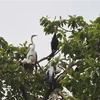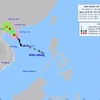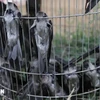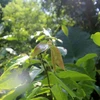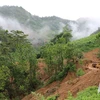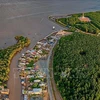Together with the Xuan Thuy National Park in Nam Dinh province – the first Ramsar-recognised site in Southeast Asia, the Tien Hai Nature Reserve in Thai Binh province plays a significant role in preserving national and international biodiversity.
The sites form two major core areas in the Red River Delta Biosphere Reserve – which belongs to Ninh Binh, Nam Dinh and Thai Binh province, and was recognised by UNESCO as a world biosphere reserve in 2004.
The Tien Hai Nature Reserve is seated on the left bank of the Ba Lat River in Tien Hai district and covers a total area of 12,500 hectares, including Vanh and Thu sandy islets, mangrove forests and ecological rehabilitation land.
The reserve is rich in mangrove and casuarinas forests, shrimp ponds, and sand dunes and banks.
It is home to 215 species of birds, including seven listed in the Red Book such as grey pelican, spotted greenshank, and Asian dowitcher along with 115 species of higher plants – a major source of food for birds, 43 medicinal plants, 113 insect species, 107 fish species and 37 amphibian and reptile species.
In 2008, local authorities approved a plan to build a high-end ecological tourist site in Vanh islet, including entertainment parks, a golf course, a sports area and a seaside resort.
Though the project has yet to commence, the islet has attracted a large crowd of visitors thanks to its untouched 6-kilometre beach and more than 700 hectares of mangrove forest, part of the mangrove forest system, stretching from Ninh Binh, Nam Dinh, Thai Binh, Hai Phong and Quang Ninh province.
According to head of the island tourist site’s management board Nguyen Cong Ly, during the national holiday on April 30 and May 1 this year, the islet welcomed close to 10,000 visitors each day.-VNA
The sites form two major core areas in the Red River Delta Biosphere Reserve – which belongs to Ninh Binh, Nam Dinh and Thai Binh province, and was recognised by UNESCO as a world biosphere reserve in 2004.
The Tien Hai Nature Reserve is seated on the left bank of the Ba Lat River in Tien Hai district and covers a total area of 12,500 hectares, including Vanh and Thu sandy islets, mangrove forests and ecological rehabilitation land.
The reserve is rich in mangrove and casuarinas forests, shrimp ponds, and sand dunes and banks.
It is home to 215 species of birds, including seven listed in the Red Book such as grey pelican, spotted greenshank, and Asian dowitcher along with 115 species of higher plants – a major source of food for birds, 43 medicinal plants, 113 insect species, 107 fish species and 37 amphibian and reptile species.
In 2008, local authorities approved a plan to build a high-end ecological tourist site in Vanh islet, including entertainment parks, a golf course, a sports area and a seaside resort.
Though the project has yet to commence, the islet has attracted a large crowd of visitors thanks to its untouched 6-kilometre beach and more than 700 hectares of mangrove forest, part of the mangrove forest system, stretching from Ninh Binh, Nam Dinh, Thai Binh, Hai Phong and Quang Ninh province.
According to head of the island tourist site’s management board Nguyen Cong Ly, during the national holiday on April 30 and May 1 this year, the islet welcomed close to 10,000 visitors each day.-VNA
